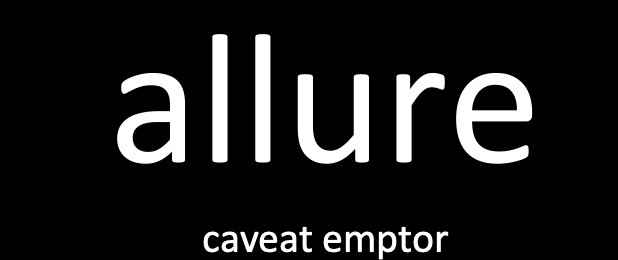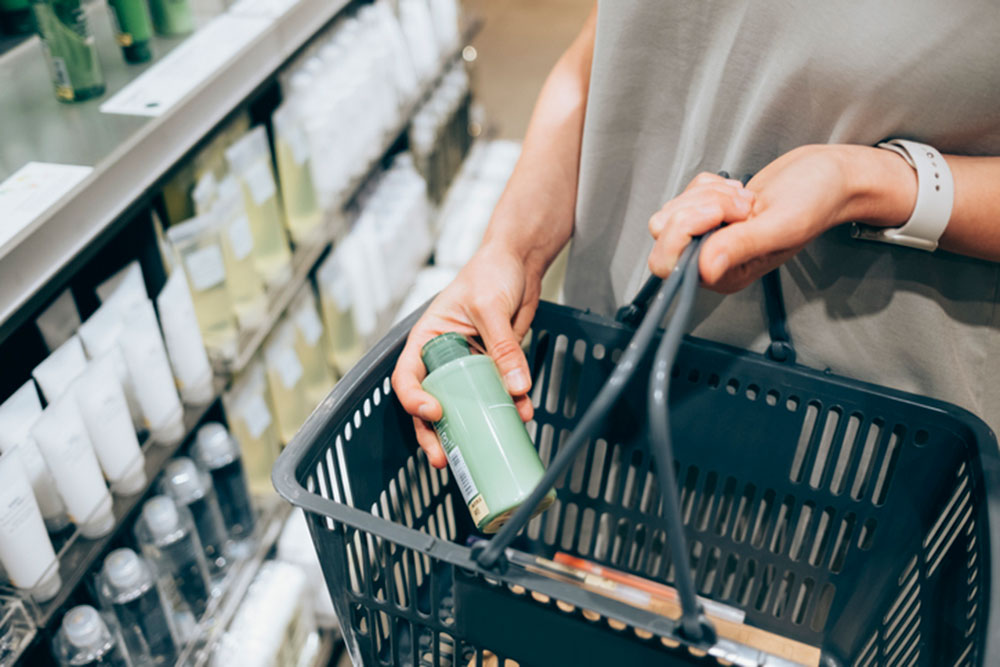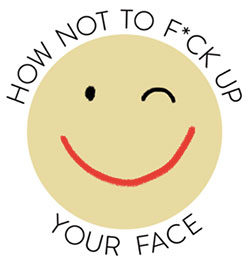By Valerie Monroe
If you’re interested in feeling happier about your appearance—especially as you age—you might like reading what she has to say about it. For more of her philosophical and practical advice, subscribe for free to How Not to F*ck Up Your Face at valeriemonroe.substack.com.
WHILE SCROLLING through Instagram one day I came across beauty journalist Jolene Edgar’s post on a story in Allure magazine about the skincare product phenomenon Augustinus Bader. Her post immediately caught my eye, because I remembered that when I first heard about it four years before, I thought exactly this: Here’s another wildly expensive face lotion that does nothing but moisturize. The press releases insisted that Augustinus Bader, a scientist who (it was claimed) had worked miracles on savagely damaged skin, had finally made available to the public a product containing the secret to his revolutionary skincare magic. I was blessed with a bottle of the holy cream ($290), along with a sermon about how using it every day was going to completely renew my skin. After I tried it for a few weeks and experienced no ecclesiastical transformation, I stashed the bottle under my bathroom sink to enjoy its heavenly rest.
The thing is, unlike other expensive face lotions sold with similarly outlandish claims, this one suddenly started popping up everywhere—and I mean everywhere—a mention of a fancy face lotion might appear. Clearly, there was a marketing (if not a skincare) miracle involved. And, as Allure deftly points out, it was a doozy. Read the story here.
One more thought: For a magazine that has always inched along the heavily greased tightrope between truth-telling and marketing in the beauty big-top, this piece is a valiant example of how it can be gracefully done.

So I hope you’ll soon feel more confident that your FOMO about expensive skincare is misplaced. If having pricey lotions and creams on your vanity makes you feel good, if that’s a treat you like and can afford, go for it. And make the most of that enjoyment. Your investment may result in an improved mood, but don’t expect an improvement in your complexion.
You can buy all the essential, over-the-counter facial products I use for around $50. Do they work? I’d show you a photo of my face, but why? Let’s not compare.
This is what I wrote to gentle reader D, who asked for a simple, effective skincare routine. It’s my own, approved by HNTFUYF DermDiva Heidi Waldorf.
Wash your face in the evening with a non-soap cleanser. (In the morning, I only rinse with water but you could use a cleanser if you think you need it.) Almost any drugstore cleanser will do the job—and you can check out this post for suggestions. At night, you might also try a prescription retinoid, the vitamin-A derivative that’s been shown to help generate collagen and elastin. You can see your dermatologist for a prescription ($$$) or try an online prescription source (I’ve used this one and like it). I’m currently trying this inexpensive drugstore retinoid and like it fine. If you find the retinoid initially irritating, apply it once a week and gradually increase the usage till you use it every night or every other. Use a pea-size amount of product only! You can apply a moisturizer on top of it if your skin feels dry. And be sure to moisturize on non-retinoid nights to prevent dryness, says Waldorf. For daytime, you need a broad-spectrum sunscreen after you wash or rinse your face in the morning. I use this one. I also like the Colorescience powder sunscreens in a brush system to reapply if I’m outdoors all day.
That’s it. To recap:
😴 🌙
gentle, non-soap cleanser
retinoid
moisturizer
😊 ☀️
broad-spectrum sunscreen
If you’re like most women I know, you want to ask, “But doesn’t ABCDExpensive serum help with OPQRSkin issue?” And I want to answer, “IMHONo.”
The effect you see from most skincare products is the result of moisturization, not the fancy and often outlandish claims on the label (note Allure story above). Many dermatologists advise using a vitamin C serum for extra protection against sun damage; though studies have shown some effectiveness, I think the price of most popular vitamin C serums isn’t worth the potential help you might get from it. Your call.
With the money I save from avoiding expensive creams and lotions, I choose a few in-office treatments. Why? Because medical treatments have real science behind them and are therefore more likely to result in a difference you can see. I always ask how visible a difference a treatment will most likely make on me.
Around six months ago, dermatologist Estee Williams gave me a Sofwave treatment on my forehead and a radio frequency (or RF) microneedling treatment on my lower face and neck. When I saw her recently for my bi-annual neurotoxin treatment (forehead only, saving my crow’s feet), we compared photos from before the Sofwave and RF microneedling. We agreed: If there was a difference, it was micro…scopic. That may be because of my age (71) or because I had one treatment only. These two treatments can help with tightening, and the results are variable and somewhat unpredictable depending on the patient; some respond better to one device than another, says Williams. (And, she adds, with her usual, admirable, even breathtaking honesty, the less they have to do, the better they work 😉.) I wouldn’t have another Sofwave treatment but will probably at some point have another RF microneedling. Though I saw no appreciable difference in my neck, I’ve previously had RF microneedling on my face and liked the results: It’s been shown to help regenerate collagen and elastin, giving the skin a healthy, more even-toned look.
Paying someone to punch microscopic holes in my face seems primitive—then again, so does sliding a piece of thread between my teeth to clean them. And right now I still have my limits: No surgery till we have pop-off heads.
MyLittleBird often includes links to products we write about. Our editorial choices are made independently; nonetheless, a purchase made through such a link can sometimes result in MyLittleBird receiving a commission on the sale, whether through a retailer, an online store or Amazon.com.
If this post was sent to you by a friend, you can sign up for the newsletter at the very, very bottom of this page.


